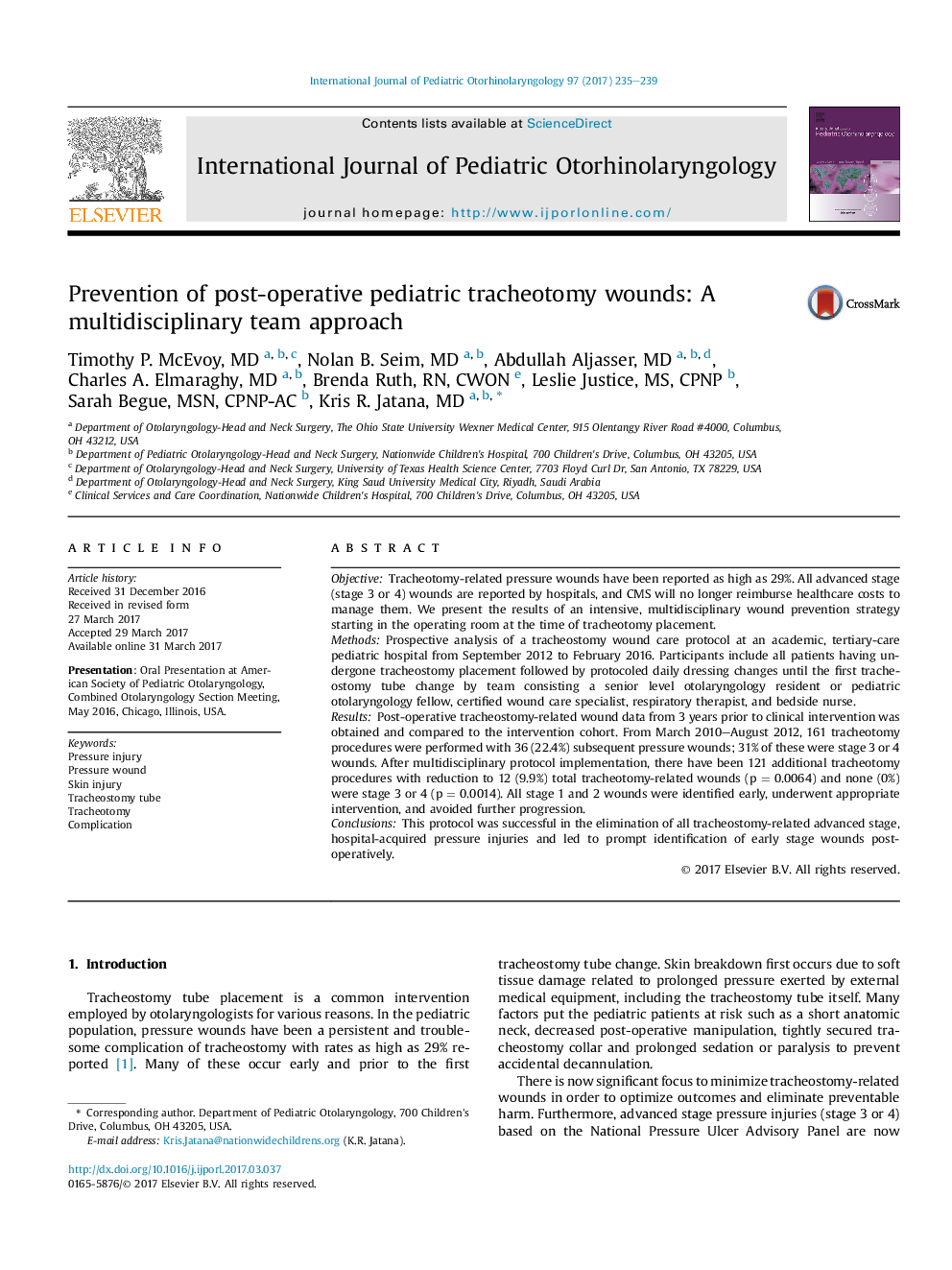| Article ID | Journal | Published Year | Pages | File Type |
|---|---|---|---|---|
| 5714907 | International Journal of Pediatric Otorhinolaryngology | 2017 | 5 Pages |
ObjectiveTracheotomy-related pressure wounds have been reported as high as 29%. All advanced stage (stage 3 or 4) wounds are reported by hospitals, and CMS will no longer reimburse healthcare costs to manage them. We present the results of an intensive, multidisciplinary wound prevention strategy starting in the operating room at the time of tracheotomy placement.MethodsProspective analysis of a tracheostomy wound care protocol at an academic, tertiary-care pediatric hospital from September 2012 to February 2016. Participants include all patients having undergone tracheostomy placement followed by protocoled daily dressing changes until the first tracheostomy tube change by team consisting a senior level otolaryngology resident or pediatric otolaryngology fellow, certified wound care specialist, respiratory therapist, and bedside nurse.ResultsPost-operative tracheostomy-related wound data from 3 years prior to clinical intervention was obtained and compared to the intervention cohort. From March 2010-August 2012, 161 tracheotomy procedures were performed with 36 (22.4%) subsequent pressure wounds; 31% of these were stage 3 or 4 wounds. After multidisciplinary protocol implementation, there have been 121 additional tracheotomy procedures with reduction to 12 (9.9%) total tracheotomy-related wounds (p = 0.0064) and none (0%) were stage 3 or 4 (p = 0.0014). All stage 1 and 2 wounds were identified early, underwent appropriate intervention, and avoided further progression.ConclusionsThis protocol was successful in the elimination of all tracheostomy-related advanced stage, hospital-acquired pressure injuries and led to prompt identification of early stage wounds post-operatively.
